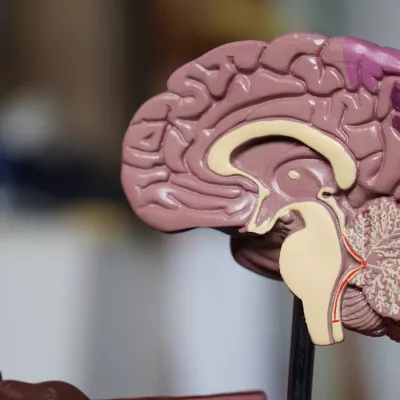Mental health
Mental disorders are among the top 10 leading causes of health loss worldwide, with anxiety and depressive disorders ranked as the most common across all age groups and locations.
Photo by Ashley Batz, Unsplash.
Where are mental disorders most common?
The countries with the highest age-standardized rates of mental disorders in the world are Iran, Australia, and New Zealand. On a regional level, we also see high prevalence and disability in parts of the Americas, including the US and Brazil.
Some of the lowest rates in the world are in parts of Asia, like Viet Nam, Brunei, and Japan.
Some of the variation detected in our prevalence estimates is due to differences in the risk factors for mental disorders and their treatment across countries. However, the quality and availability of epidemiological data vary substantially by country, and this too may bias some of the variation in prevalence detected.
How can we respond to the burden imposed by mental disorders globally?
There are a number of proven actions governments can take to reduce the burden of mental disorders in their region.
- Work to reduce contributing factors, like financial stress and domestic violence. There are many known risk factors for mental disorders, such as childhood maltreatment, bullying victimization, conflict, and interpersonal violence. Addressing the causes of mental disorders and taking steps to mitigate them is a proactive approach to reducing the burden on the population.
These preventive strategies can take different forms. For instance, we have seen success in the implementation of learning programs in schools to support the social and emotional development of children and youth, build their resilience, and discourage risky behaviors.
- Increase awareness and reduce stigma. In many regions of the world, mental health can still be a taboo topic. Breaking the stigma can encourage more people to seek care and treatment. Read more about this neglected health challenge in Latin America and the Caribbean.
- Improve access to effective treatment for mental health. Considerable research has been done to demonstrate the success and cost-effectiveness of a range of pharmacological and psychosocial treatments for mental disorders. The focus now needs to turn to improving the uptake of these treatments within the population and preventive intervention strategies to slow down the emergence of new mental disorder cases.

Dr. Alize Ferrari, Affiliate Associate Professor at IHME
“It’s important for us to learn from [COVID-19] so we’re better prepared for the next population shock that comes along, whether it’s an economic shock or a shock around conflict, war, and violence – all these things that we already know do impact the prevalence of mental disorders.”
Are the prevalence and burden of mental disorders increasing over time?
Since 1990, mental disorders have jumped up in the ranking of top causes of health loss worldwide – from 12th to 7th place.
While the age-standardized prevalence of these conditions has not increased by much, we’re seeing an even greater impact on the overall health of the population. This reflects a general change in the landscape of global health: as we see fewer deaths from infectious diseases like malaria, more people are now living to an age when they’re more likely to be impacted by mental disorders.
How did COVID-19 impact the prevalence and burden of mental disorders?
Before 2020, anxiety and depressive disorders were already significant causes of health loss worldwide, and the COVID-19 pandemic only increased that burden. There were an additional 53 million cases of depressive disorders and 76 million cases of anxiety disorders due to the pandemic, a 28% increase.
We estimated particularly significant increases of mental disorders in women and young people. In 2020, depressive and anxiety disorders were highest in the 20–35-year-old age group, and women experienced nearly twice as many new cases as men.
Global burden of depression and anxiety by age and sex in 2020
A few reasons women were uniquely impacted may include:
- Higher rates of job loss from mandates and lockdowns, resulting in financial insecurity
- Increases in domestic violence during stay-at-home orders
- Greater likelihood for women to take on additional care responsibilities in the home
While there are many known treatments and preventive interventions for mental disorders, large numbers of people around the world still face barriers in accessing those treatments.

Dr. Alize Ferrari and Dr. Damian Santomauro discuss mental health in our Global Health Insights podcast.


